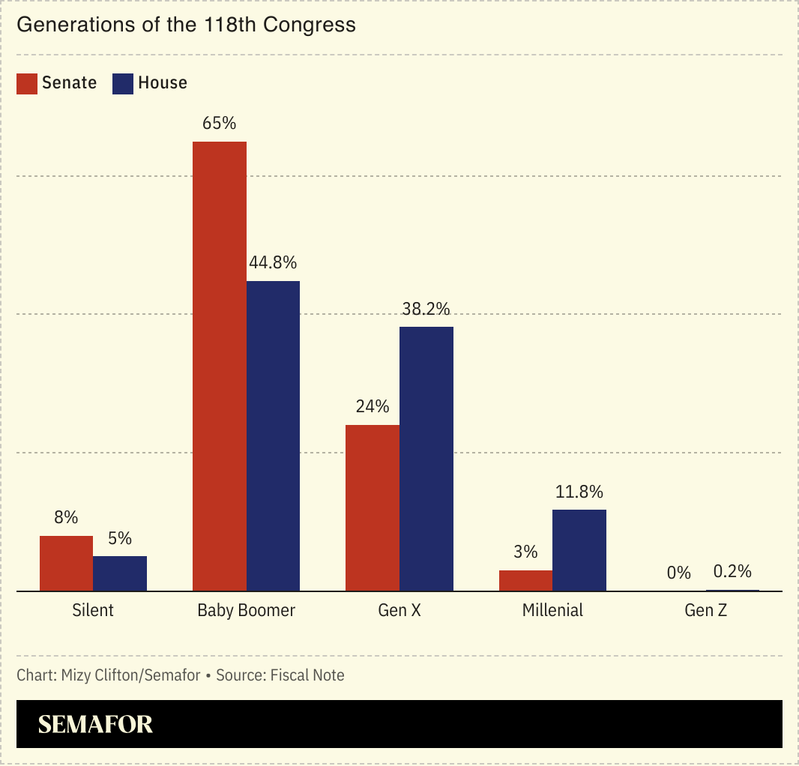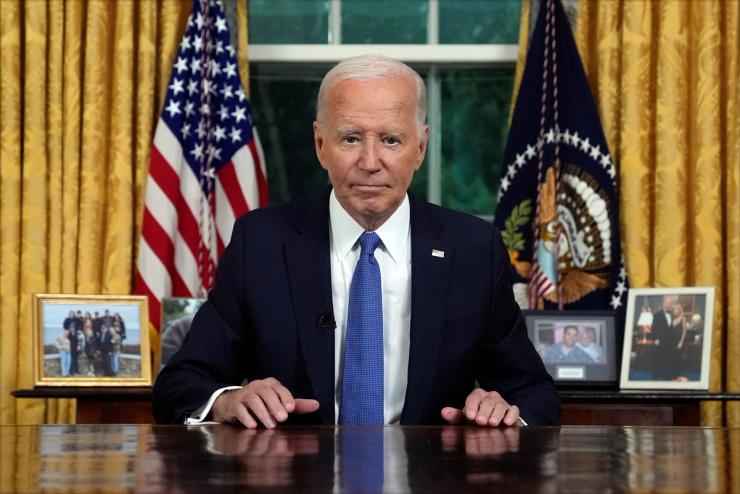The News
US President Joe Biden called for “new voices, fresh voices — yes, younger voices” in his first address to the nation after exiting the presidential race, underlining the ongoing centrality of age to the election campaign.
The 81-year-old — who would have been 86 by the end of a second presidential term — said it was time to “pass the torch to the next generation,” as he endorsed 59-year-old Vice President Kamala Harris to take on 78-year-old Donald Trump in November.
SIGNALS
Fixing the US’ gerontocracy problem may require a cultural shift
With a median age of 59, Congress today is the oldest it’s ever been, FiveThirtyEight reported. But imposing age maximums for public office risks being discriminatory, and avoids the “underlying problem” that the odds are stacked against younger candidates seeking election, a columnist argued in Vox — which will require democratic reform to fix. Yet America’s “gerontocracy crisis” may run deeper than the age profiles of different government branches, and requires a cultural shift to turn around, the author of a forthcoming book about gerontocracy wrote in The New York Times: In a society where elderly people are “treated as irrelevant and are subject to neglect,” lawmakers cling onto office past their prime to stave off fading into obscurity, he argued.

Aging leaders can lead to biased policymaking
Gerontocracy is “plutocracy’s cousin,” insofar as power concentrated in the hands of old people who are often also rich leads to policies that benefit this group, such as welfare spending that is weighted toward seniors, a columnist argued in The Atlantic in 2020. In the US, federal spending per annum on elderly people and children sits at a ratio of about 2:1, which rises to around 7:1 if education is factored out, Cameron Abadi noted in Foreign Policy’s Ones and Tooze podcast. But Biden has not really ruled as a gerontocrat, a conservative writer argued in The Economist: He cobbled together a diverse electoral coalition in 2020, and has shown vigor — even aggressiveness — on issues like green energy and Ukraine.
There are big gaps between world leaders and the populations they serve
Aging leaders aren’t a uniquely US problem: Across the world, the median age difference between a country’s leader and its population is 32 years, a gap that is particularly pronounced in dictatorships, The Washington Post noted. However, Europe seems to be increasingly bucking this trend as established parties decline in popularity, giving younger politicians the opportunity to create new parties and enter office, an expert in geopolitics told the outlet.



